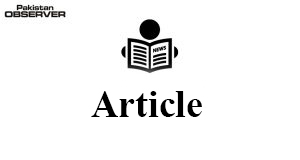Hassam A Siddiqui
It is an established fact that media plays a pivotal role in reporting a conflict and unfolding the realities of the events happened on ground. Though technology has reduced the tyranny of long distances, the commercial realities of news gathering has also impacted the reporting of conflicts. Media plays a very important role in shaping the opinion of masses; however incomplete and censored reporting often distorts the ground realities of the events. An objective assessment of media reporting of Indo-Pakistan 1971 conflict depicts the very same phenomenon. During that conflict, media of India and Pakistan in particular and international in general, portrayed the facts with quite diversity creating a sense of ambiguous illusionary understanding of the exact situation of the then East Pakistan. It is maintained that media reporting by the countries, party to the conflict including India, Pakistan and Bangladesh, took extreme positions and the authenticity and reliability of news presented in the international media could not be considered for fulfilling the objective standards of professional journalism.
In case of Pakistani media, as soon as the conflict initiated, media was completely brought under government control. The Ministry of Information instructed the media agencies that news regarding the killing of non-Bengalis by the hand of insurgents is not to be reported in West Pakistan as it could result in revolt leading to severe consequences. The media complied on it faithfully and in this regard, all sort of news regarding violence was blacked out in West Pakistan, except the approved content in line with the government policies. The Pakistani authorities expelled journalists from the then East Pakistan that hampered the process of first hand reporting and were forced to send news stories from India. This resulted in altering the nature of conflict. Firstly, it was hard for international media to get the real situation on ground. Secondly, international media stationed in India had to rely on secondary sources, in fact, the uprightness of these sources are still a question mark in itself. The matter of the fact is that this very strategy of Pakistan’s government hampered the process of objective and neutral information and unfortunately it is Pakistan, which suffers the blame of massacre in most of the international publications published during the last fifty years.
On the other hand, India openly used propaganda tactics to achieve its strategic interest in the conflict zone, and this very strategy helped them significantly to construct their desired narrative. Indian Intelligence Agency, RAW established Bangladesh Radio “Free Bengal Betal Kendra’ for the propaganda purpose. Mukti Bahini was eloquently using propaganda tactics with the support of India while Bengali nationalists were using visual arts for projecting their discourse. One of the significant evidence was cartoon sketching of Pakistani leadership and its army officials depicting them as villain. The objective of these acts was demonization of West Pakistan Establishment, its forces and its supporters based in the then East Pakistan.
International media played a biased role in reporting 1971 conflict as well. Number of mainstream media outlets without verification of the information with considerable exaggeration published the stories, some of which include the long list of atrocities that are believed to be committed by Pakistan Army. Figure of three million deaths in the conflict was another distorted fact that was published by international media. One of the examples of biased journalism is the case of massacre in Jessore, where Mukti Bahini forces killed the non-Bengali people and afterwards shared the photographs of victims with international media by quoting it the deadly act of Pakistan Army. Importantly, The New York Times and Washington Post printed the news on front pages without verification of data and blamed Pakistan for it.
It can be said that unfortunately, Pakistani media could not deconstruct the myths and fabrications of 1971 War, facts of which were established by the biased journalism of Indian and international media. Our national narrative on the realities of East Pakistan is very pessimistic and it is now the duty of our mainstream print and electronic media to explicate the facts and realities of 1971 war, in order to present the right and accurate version of Pakistan’s history.
—The writer is freelance columnist.









